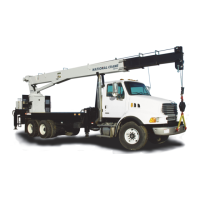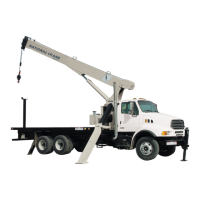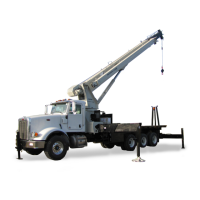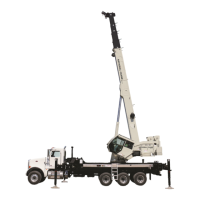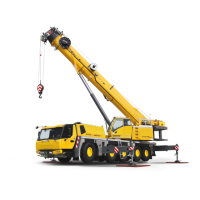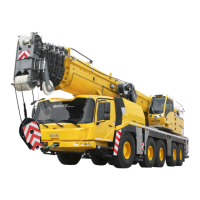5-
"^$'%j
44
$$'
K#
'6
%'
$
• Attempting to swing up too much of incline.
• Turn circuit relief valves sticking.
• Turntable bearing drag.
• Brake not releasing properly.
• Excessive pump speed.
• Low oil temperature.
• Low hydraulic oil supply.
• Suction line kinked, collapsed or blocked.
• Hydraulic oil too thick.
• Relief valve chattering.
• Hydraulic tubing vibration.
• Tank breather plugged.
• Not getting oil to cylinders.
• Worn or damaged piston seals.
• Air in hydraulic oil.
• Loose holding valve.
• Dirt in holding or check valve.
• Load too heavy.
• Relief valve setting too low.
• Motor worn excessively.
• Counterbalance valve defective or leaking.
• Anti-two-block system defective.
• Brake worn out.
• Gearbox grease low.
• Duty cycle too high.
• Kill switch on crane control console de-
pressed.
• Level machine.
• Clean and check circuit pressure.
• Lubricate thoroughly as rotating boom.
• Check for 200 + PSI brake pilot pressure.
Clean pilot line or adjust motor counterbal-
ance valves.
• Adjust or clean brake for proper release.
• Adjust foot throttle or check for too high
PTO ratio.
• Allow unit to warm up.
• Check and fill.
• Clear blockage.
• Warm oil or use oil more applicable to
environment.
• Dirt in relief valve or damaged relief.
• Check for loose tubing.
• Clean breather.
• Clean and replace as required.
• Replace as required.
• Cycle operate crane cylinder to remove air.
• Tighten valve.
• Clean valve.
• Check load and change to applicable
multipart reeving.
• Check and adjust if required.
• Replace motor.
• Clean and replace as necessary.
• Repair anti-two-block system.
• Repair or replace brake.
• Check and fill as required.
• Reduce cycle time or speed of winch.
• Pull up kill switch.
• Check all other normal motor vehicle
systems as outlined by normal practice.
)%
%3$
2&4
$3$
&%%
2&
5K
&$
'<
4$$$
Reference Only
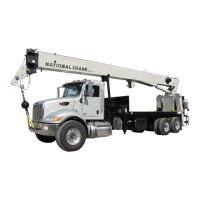
